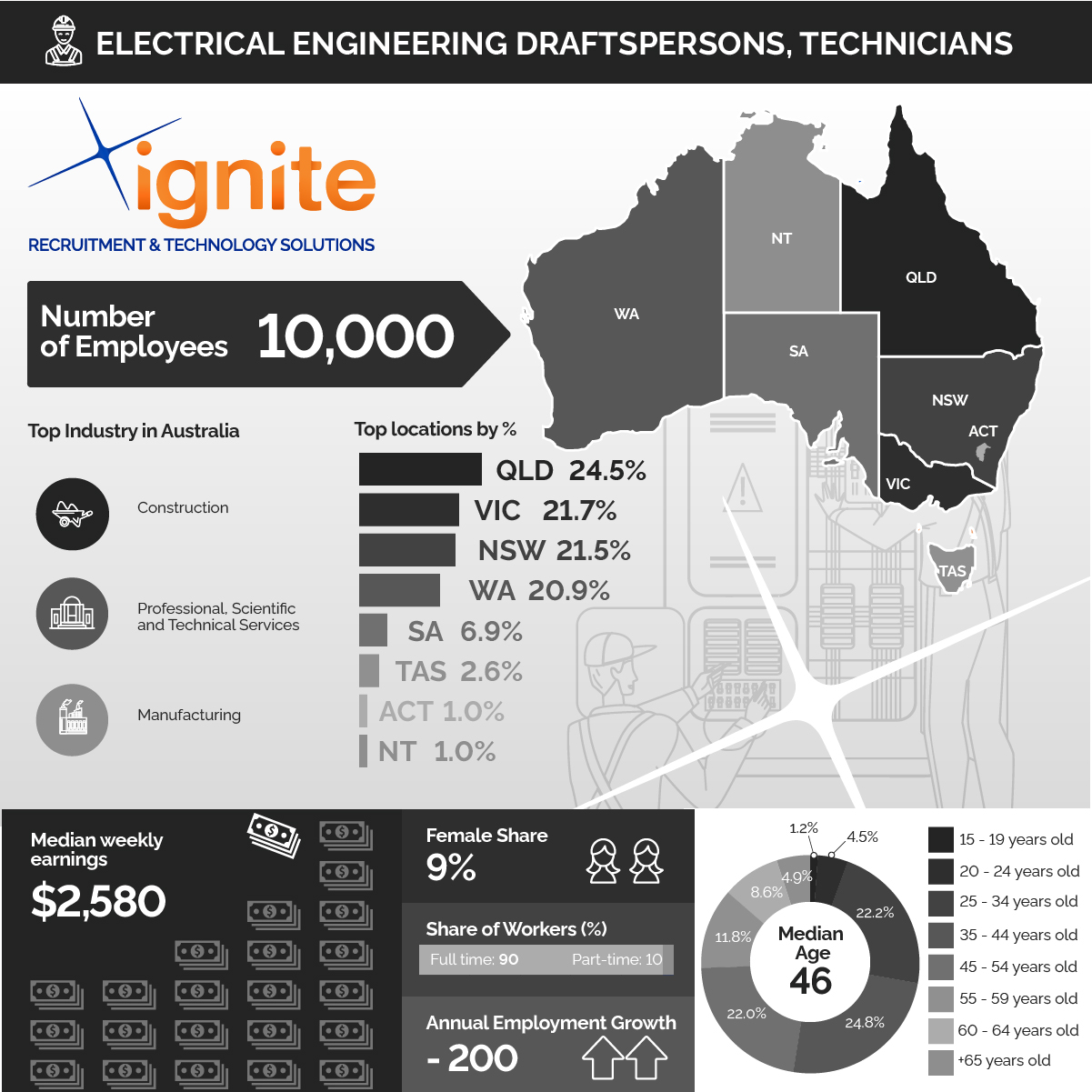
The role of Electrical Engineering Draftspersons and Technicians is integral to Australia’s industries, particularly in Construction, Professional, Scientific and Technical Services, and Manufacturing. With around 10,000 employees currently in the workforce, this profession offers stable career prospects and competitive earnings.
Demographics and Age Distribution
The median age for Electrical Engineering Draftspersons and Technicians is 46, reflecting a workforce with a blend of experience and emerging talent. Here’s a breakdown of the age distribution in this field:
| Age Group | Percentage (%) |
|---|---|
| 15-19 | 1.2% |
| 20-24 | 4.5% |
| 25-34 | 22.2% |
| 35-44 | 24.8% |
| 45-54 | 22.0% |
| 55-59 | 11.8% |
| 60-64 | 8.6% |
| 65+ | 4.9% |

The largest age group in the profession falls between 35-44 years, accounting for nearly a quarter of the workforce, followed by those aged 25-34 at 22.2%.
Earnings and Employment Trends
Professionals in this field enjoy a median weekly earning of AUD 2,580, which places them among the higher earners in Australia’s technical professions.
However, the sector faces some challenges, with annual employment growth showing a decline of 200 jobs. Despite this, the demand for skilled Electrical Engineering Draftspersons and Technicians remains significant across key industries.
Gender Representation
The field continues to be male-dominated, with females making up only 9% of the workforce. Increasing diversity remains a focus for industry leaders as they look to attract more women into these roles.
Top Locations Across Australia
When it comes to employment distribution, Electrical Engineering Draftspersons and Technicians are spread across Australia’s states and territories. The highest concentrations are in Queensland (24.5%), Victoria (21.7%), and New South Wales (21.5%), highlighting the importance of these roles in key infrastructure and industrial projects. Here’s the breakdown of employment by state:
| State/Territory | Percentage (%) |
|---|---|
| New South Wales (NSW) | 21.5% |
| Victoria (VIC) | 21.7% |
| Queensland (QLD) | 24.5% |
| South Australia (SA) | 6.9% |
| Western Australia (WA) | 20.9% |
| Tasmania (TAS) | 2.6% |
| Northern Territory (NT) | 1.0% |
| Australian Capital Territory (ACT) | 1.0% |
Working Hours
A vast majority of employees in this profession work full-time, with 90% of the workforce engaged in full-time roles, while only 10% work part-time hours. This reflects the high demand for constant technical expertise in key industries.
For more detailed information on Electrical Engineering careers or recruitment services, visit Ignite Engineering Recruitment. Whether you’re seeking talent or a new opportunity, Ignite is a trusted partner in Australia’s engineering landscape.

Leave a Comment
We’d love to hear from you! Share your thoughts or ask a question in the form below.